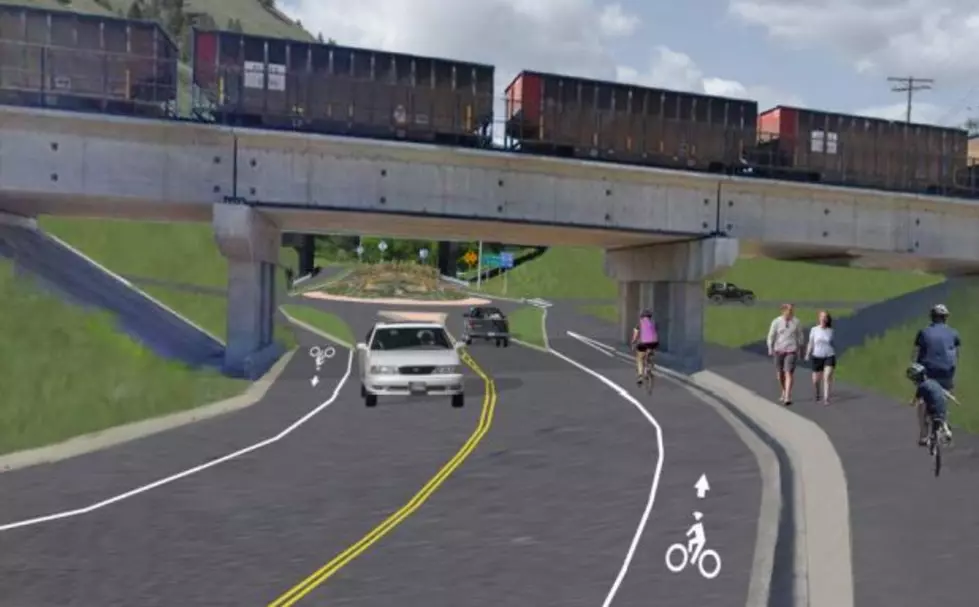
East Missoula corridor plan nears adoption, though funding could be challenging
A long standing vision to reshape the East Missoula corridor from Van Buren Street to Tamarack Road has entered its final phase, though the estimated $26 million cost could take time to fund.
After years of work, the Highway 200 Corridor Plan could be adopted this spring, opening the door to implementation and the challenging search for funding.
“We have a design and we have a good idea of what we want to build and some cost estimates,” said Missoula transportation planner Aaron Wilson. “The next step is identifying what our funding sources are and looking at specific projects within this, knowing we're unlikely to build the whole corridor all at once. The cost of that would likely exceed any funding sources we have.”
To understand the individual costs and search for funding, the final draft has separated various project elements as standalone projects and listed them in priority.
Some of the highest priorities carry the highest costs, including the East Missoula streetscape project, which rings in at around $7 million. That project element includes newly aligned intersections, raised cycle tracks, a center turn lane and six-foot sidewalks on both sides.
“We're creating much more of a Main Street with the adequate lighting, boulevard, trees and really improving this section,” Wilson said. “It will feel much more like an actual urban street to accommodate some of the development we're seeing though East Missoula.”
The project element with the highest cost includes widening the Montana Rail Link bridge on Highway 200. The existing structure is narrow and allows just enough room for two passing vehicles.
Replacement costs are estimated at $10.8 million. Wilson said the high cost is attributed in part to a requirement that a temporary bridge be constructed to maintain train traffic during construction.
He called it challenging but feasible.
“It's one of the most impactful parts of this project,” Wilson said. “The best solution is expensive but feasible, and that's replacing the bridge and widening it to allow full multi-model connectivity. It's expensive but challenging, but it would allow the shared-use path through there and increase visibility.”
From the Van Buren intersection to the railroad bridge, the plan calls for right-of-way on both sides of the road ranging from 60 feet to 90 feet. The design would include on-street bike lanes on both sides of the road.
The south side of the roadway would also including a shared use path.
“There is room for on-street parking on the south side of the road,” Wilson said. “We see a lot of parking pressure, so adding the parking can help with slowing traffic and providing that parking overflow from the multi-family and other residential development along there”
Parking is also a concern near the Sha Ron fishing access site, which serves as a popular summer attraction. As it stands, those who use the river during peak hours are forced to park up and down Highway 200, creating what county officials have described as a safety concern.
Wilson said the Montana Department of Transportation and Montana Fish, Wildlife & Parks are moving quickly toward a solution that will likely include a new parking lot and a trail to the access site.
The site would also include a bus stop, making room for a future river shuttle to alleviate congestion. Jordan Hess, a member of the Metropolitan Planning Organization and Missoula City Council, said both Mountain Line and the University of Montana have discussed a recreational shuttle.
Proposed legislation could also deregulate recreation shuttles, making it possible for a private entity to provide the service.
“It's really likely we could see the proliferation of private recreation shuttles that are less regulated than previous iterations," Hess said. "I would encourage the (bus stop) to be robust and adequate for future use.”
While the Highway 200 corridor plans have received praise from those involved in the process, it’s not the first time efforts have been made to improve the corridor.
Over the past eight years, a total of 16 different transportation plans and options have been completed on the corridor. Wilson said the search for implementation and funding would start once the plan is adopted.
“Our goal is to bring this back in March for adoption,” he said. “I'm hoping we're at the point now that we'll have a plan we're all happy and comfortable with.”
